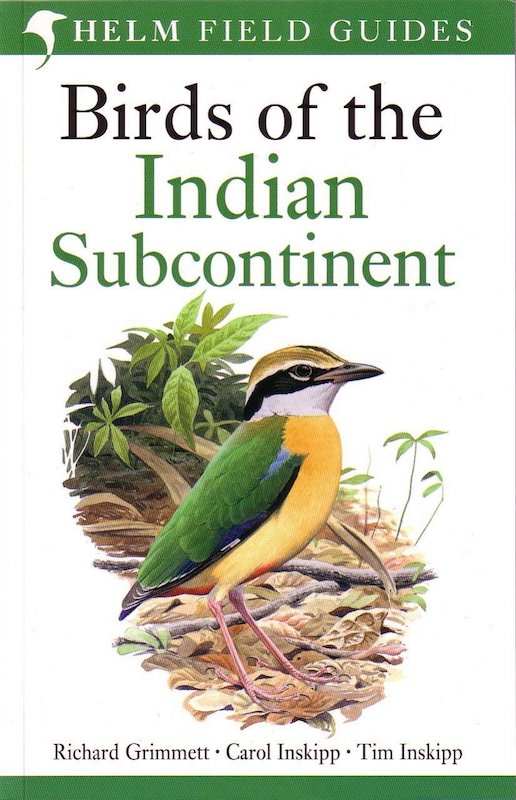| Birds of the Indian Subcontinent | By Richard Grimmett, Carol Inskipp & Tim Inskipp | Princeton | Softcover | 2012 | Edition: 2 | 528 Pages | 226 Colour Plates | Colour Distribution Maps | Black & White Illustrations | ISBN 9781408127636 | £34.99p |

Publisher’s View:
This is the second edition of the authors’ groundbreaking Birds of the Indian Subcontinent (1998) and covers all the bird species found in India, Pakistan, Sri Lanka, Nepal, Bhutan, Bangladesh and the Maldives. Many of the plates have been repainted for this edition and a number of new species added. This guide also provides tables, summarising identification features of particularly difficult groups such as nightjars, warblers and rosefinches.
NB It is published in the US by Princeton University Press under the title Birds of India
The best field guide to the birds of the Indian subcontinent is now even better. Thoroughly revised, with 73 new plates and many others updated or repainted, the second edition of Birds of India now features all maps and text opposite the plates for quicker and easier reference. Newly identified species have been added, the text has been extensively revised, and all the maps are new. Comprehensive and definitive, this is the indispensable guide for anyone birding in this part of the world.
- The leading field guide to the birds of the Indian subcontinent–now thoroughly revised and improved
- 1,375 species illustrated and described, including all residents, migrants, and vagrants
- 226 color plates–including 73 new ones–depict every species and many distinct plumages and races
- Concise text and accurate distribution maps opposite plates for easy reference
The Authors:
Richard Grimmett is Head of Conservation at BirdLife International. Carol and Tim Inskipp are freelance wildlife consultants. All three authors are widely travelled in Asia and authors of a series of books on the birds of the region.
Fatbirder View:
I am very impressed with this fieldguide!
The essentials for any such guide are good, ‘clean’, crisp and clear images, good clear distribution maps and tightly focused texts that say what the pictures cannot. This has all those features in spades and can take its place alongside the ‘market leaders’ Collins European guide and Sibley for North America.
A contributory factor is, I am sure, very good printing… how often in the past has a good guide been made mediocre by poor printing. This book needs such accuracy not just to get the tones right in the illustrations but to make the rather small type readable.
A compromise had to be reached when covering a large area with diverse birdlife – size of type, illustrations and maps etc. versus portability. I doubt such a challenge has been better met – OK it will make your arms ache if you have to hold it and study it for too long and I needed my specs for the type but young fit birders will have neither of these issues.
I thoroughly recommend this and can’t wait to get back to the sub-continent for it to help me fill some gaps in my lists!
Fatbirder
